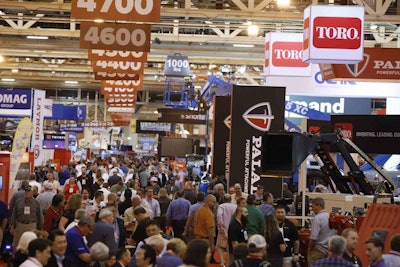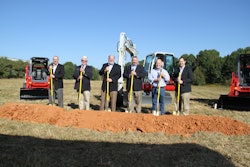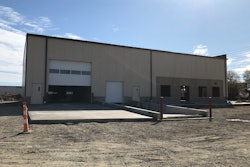 Scene from a past ARA Show.
Scene from a past ARA Show.North American rental construction equipment revenues are expected to grow 5.2 percent in 2019, with general tool forecast to grow 6.8 percent, according to the American Rental Association’s latest forecast.
ARA expects U.S. total rental revenues (including event rentals) to be $56.02 billion, with Canadian revenues pegged at $5.54 billion.
The ARA forecast is slightly lower than its previous quarterly forecast in August. The association points out that the total rental industry “continues to outpace the general economy in the U.S.” It says construction equipment rental will grow by 2.3 percent in 2020, 3 percent in 2021, 3.7 percent in 2022 and 3.1 percent in 2023 to reach $43.9 billion. The growth rates for general tool will be 3.8 percent in 2020, 3.96 percent in 2021, 5.2 percent in 2022 and 2.9 percent in 2023 to reach $15.7 billion.
“Despite signs of a slowing economy, the equipment and event rental industry continues to perform well. The most important thing for rental companies to do is continue to execute their business plans and aggressively manage their operations,” says John McClelland, ARA vice president for government affairs and chief economist.
“With chances of a recession in the next 12 months relatively low at 35 percent, rental businesses should be able to continue to grow revenues and maintain strong balance sheets,” McClelland says.
“Rental firms are well positioned for uncertain times,” says Scott Hazelton, managing director of IHS Markit, which compiles the forecast. ” The reluctance of construction and industrial companies to invest in new equipment under these circumstances, combined with a still expanding economy, suggests that the opportunities for equipment rental will continue to grow, albeit at a slower pace than the past few years.”
ARA says U.S. rental company capital expenditures are expected to remain relatively flat each year with small declines in spending in 2020 and 2021, followed by slight increases in 2022 and 2023 to reach $14.55 billion.











